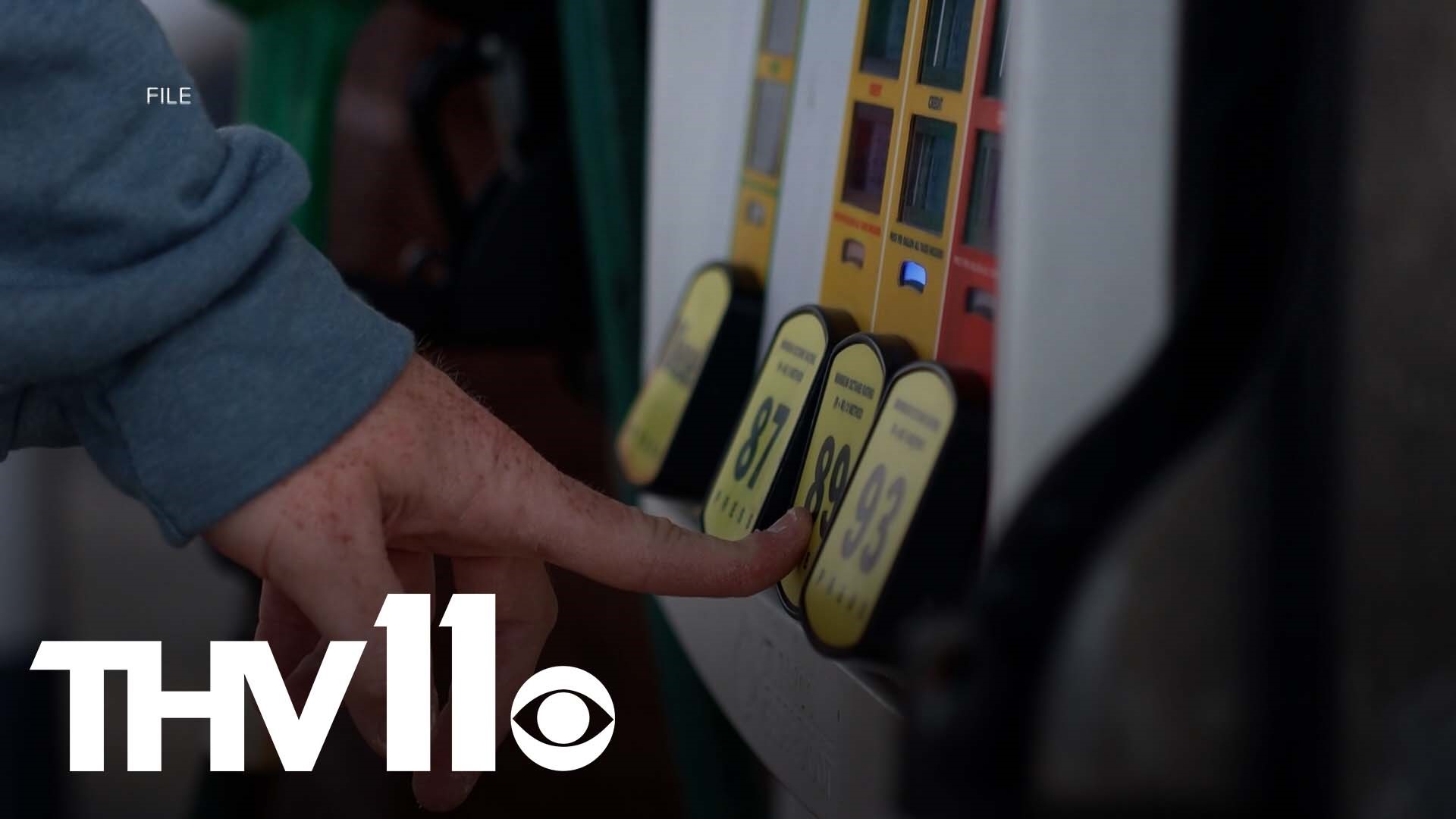LITTLE ROCK, Ark. — Gas prices in Arkansas have hit a record-high average of $3.99 per gallon, the AAA said in a statement on Monday.
The state nearing four dollars is a 17-cent jump compared to last Monday and a whopping $1.26 more per gallon than this day last year.
The previous record of $3.97 was set in July of 2008.
"Volatility in the global crude oil market continues to be the main driving factor behind the recent spike in gas prices. Ongoing oil supply concerns from the Russian invasion of Ukraine and increasing demand for gasoline, along with diesel and jet fuel, is propping up oil prices above $100 per barrel. Crude oil prices account for about 60% of what drivers pay at the pump," the statement said.
Drivers in Texarkana are paying an average of $4.22 at the pump while people in Little Rock are paying $3.95 per gallon, similar to Northwest Arkansas (Fayetteville, Springdale, and Rogers) where the average price per gallon is one cent higher at $3.96.
Arkansas is still one of the cheapest price-per-gallon states, with only Georgia, Kansas, and Missouri paying less. The Natural State is tied at $3.99 with both Mississippi and Oklahoma.
Drivers in California are paying the most at $5.85 on average for a gallon of regular unleaded gas.
AAA also gave tips on how to save money on fuel, including the idea that bad driving costs more than just your safety.
How to save at the pump:
- Slow down and drive the speed limit. Higher speeds result in more aerodynamic drag.
- Avoid constant starts and hard accelerations. These actions greatly increase fuel consumption.
- Use cruise control on the highway to help maintain a constant speed and save fuel. Just don't use cruise control on slick roads—you could lose control of your vehicle.
- Minimize your use of air conditioning.
- Avoid extended idling to warm up the engine, even in colder temperatures.
- Maintain your car according to the manufacturer’s recommendations. Regular service will ensure optimum fuel economy.
- Make sure your tires are properly maintained and inflated to the correct level.
- When driving in town, adjust your speed to “time” the traffic lights. This reduces repeated braking and acceleration that consume additional fuel.
- When approaching a red light or stop sign, take your foot off the gas early and allow your car to coast down to a slower speed until it is time to brake.

